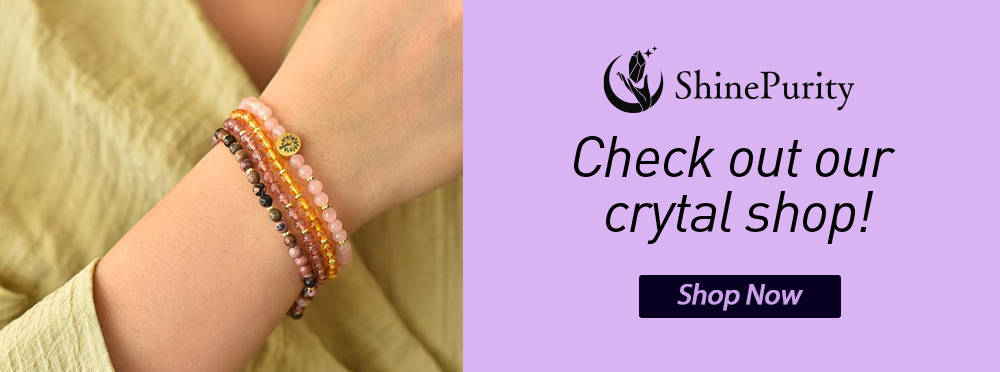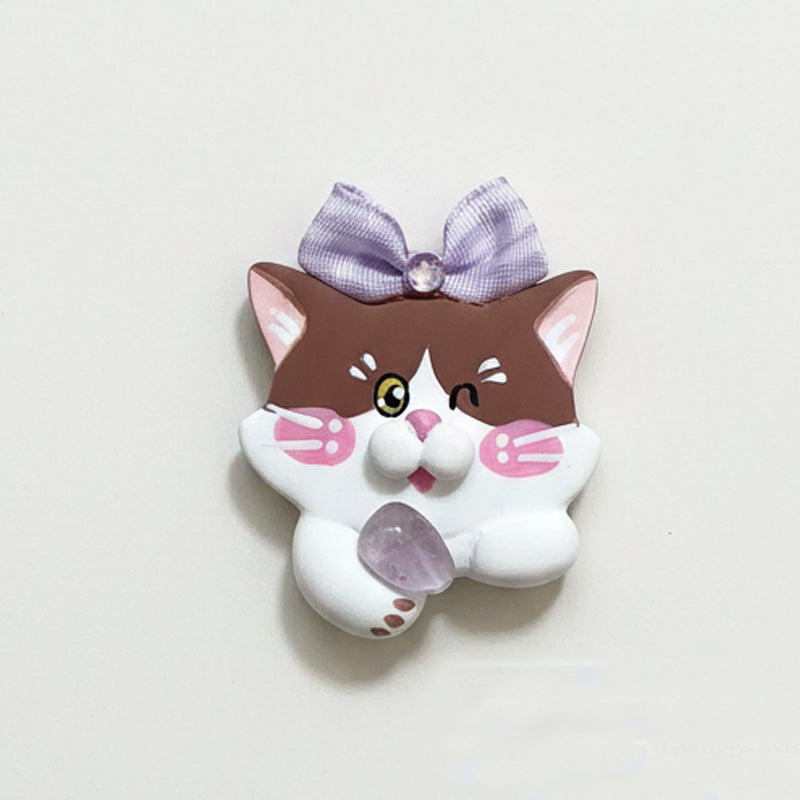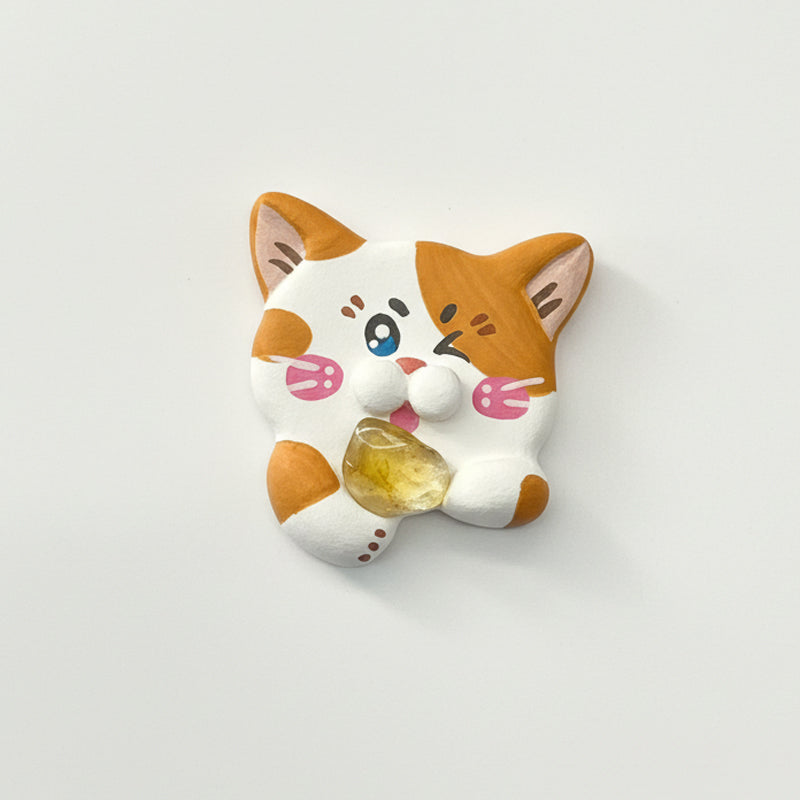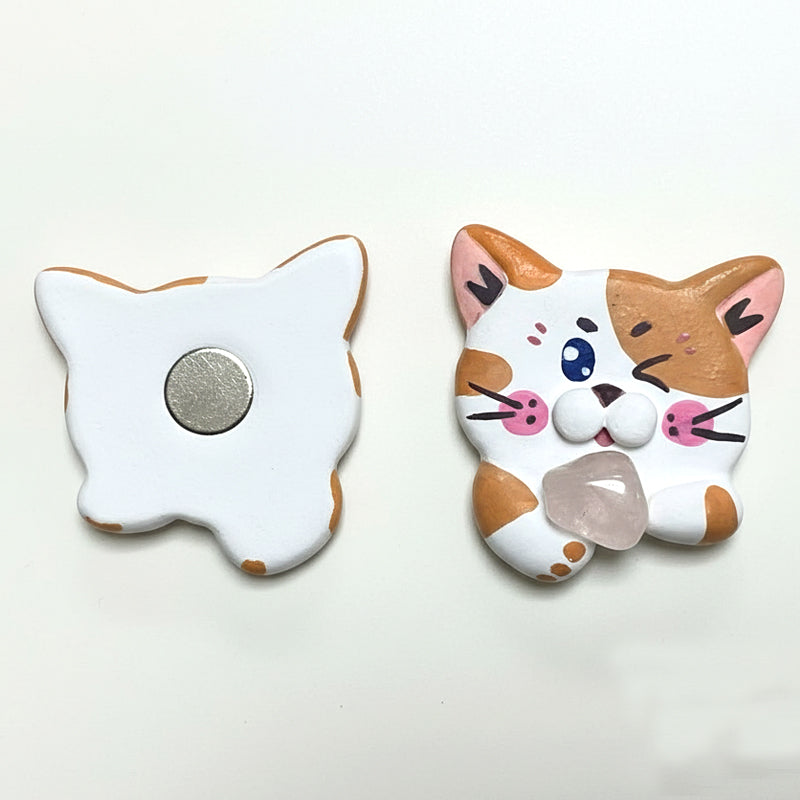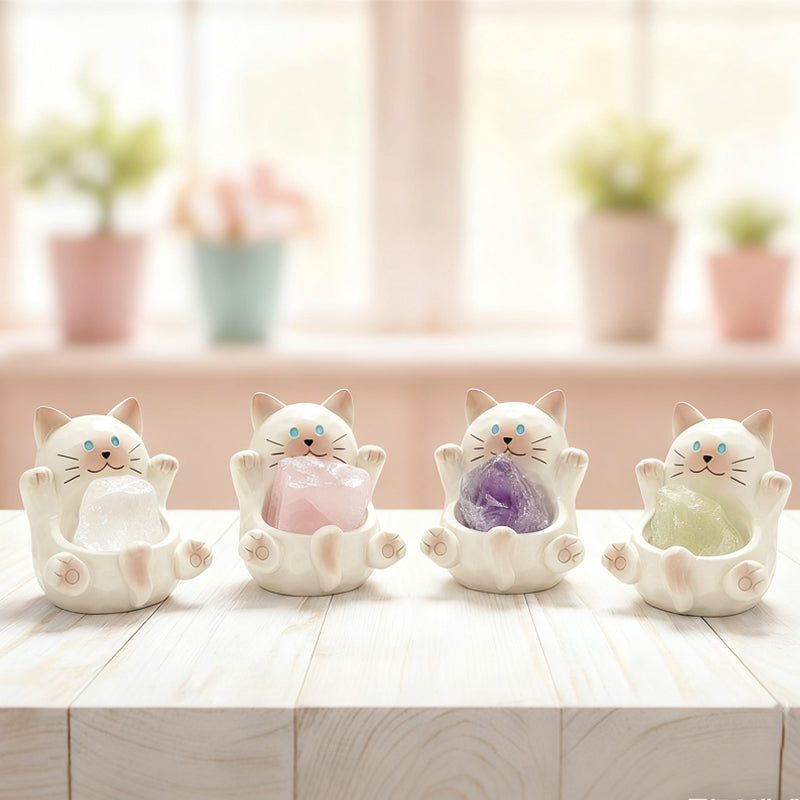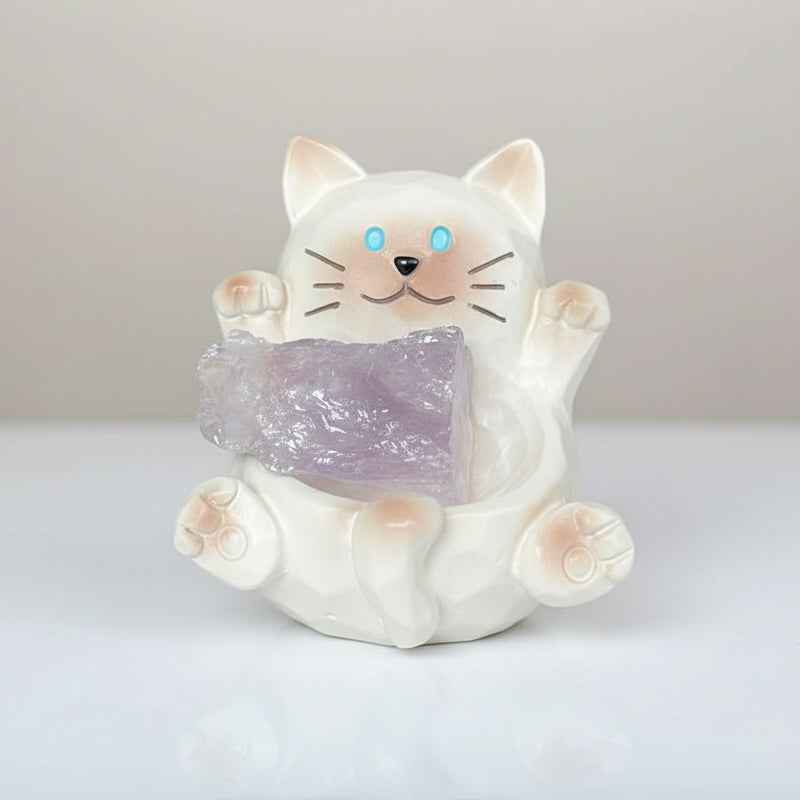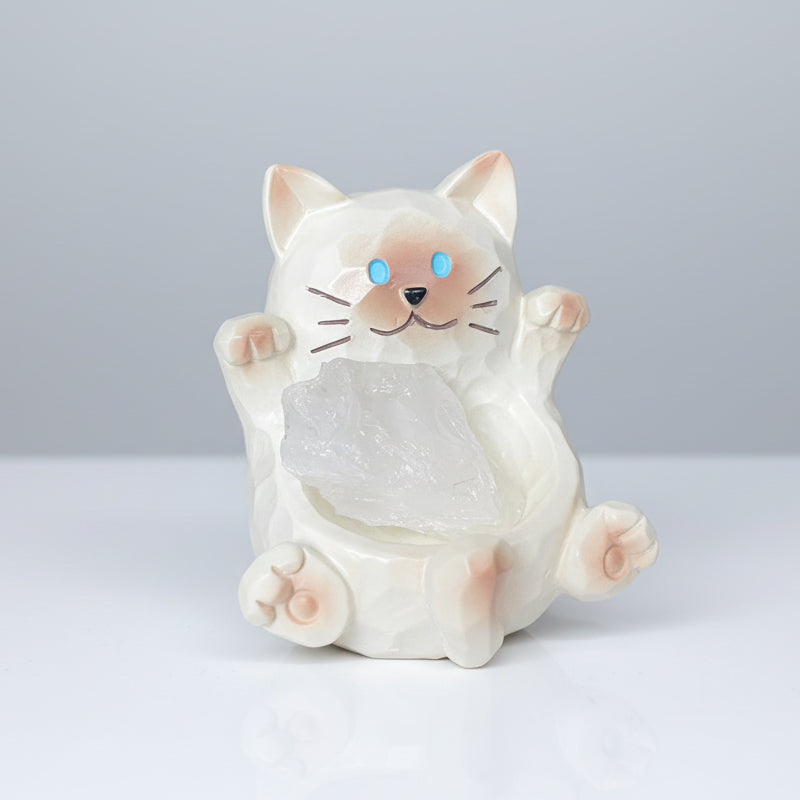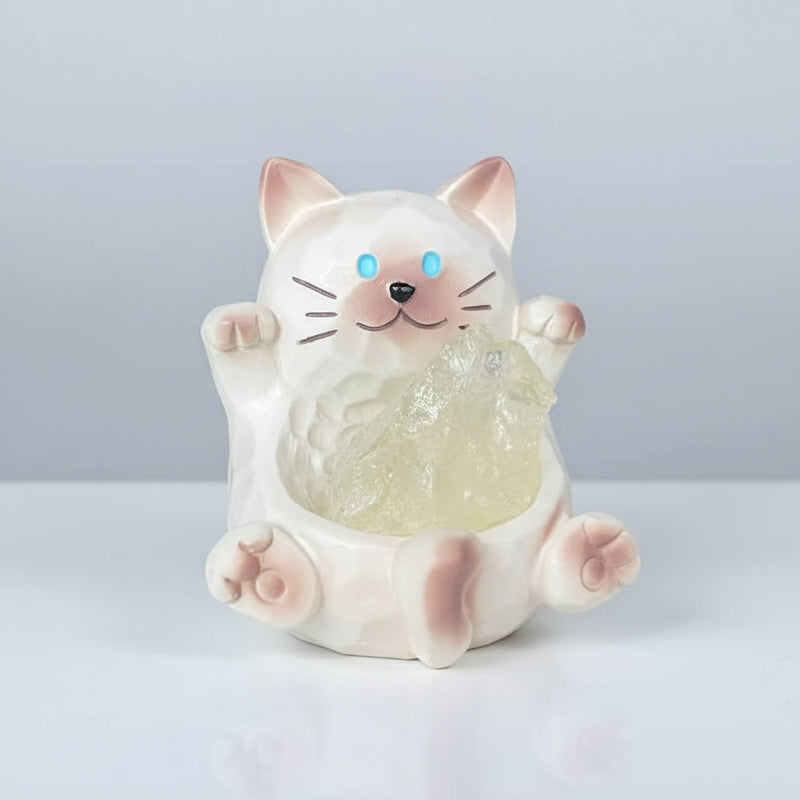In the dazzling world of gemstones, citrine shines like a star radiating unique light, emitting a warm and captivating aura akin to the sun. It is not just a beautiful mineral but carries deep historical and cultural significance, along with mysterious legends that attract countless people to explore its secrets.
The Historical and Cultural Origins of Citrine
Citrine has a long history, leaving a deep mark in the river of human civilization. In ancient Egypt, citrine was considered a sacred object, often carved into various amulets and ornaments. The ancient Egyptians believed that citrine possessed mystical powers, protecting the wearer from evil and granting them strength and courage. Archaeologists have discovered many exquisite citrine artifacts in Egyptian tombs, which not only demonstrate the ancient Egyptians' exquisite craftsmanship but also reflect the important status of citrine in their society.
In ancient Greece and Rome, citrine was also highly revered. The Greeks closely connected citrine with their mythological tales, believing it to be a gift from the sun god Apollo, symbolizing light, wisdom, and power. The Romans enjoyed crafting various jewelry and artifacts from citrine, and wearing citrine became a fashion and status symbol. Among the noble class of the time, owning fine citrine jewelry was a matter of honor, and citrine’s brilliance sparkled in Roman palaces and social gatherings.
In China, yellow has always been a symbol of royalty and emperors, and citrine was regarded as the exclusive gem of the royal family. From ancient court artifacts to royal jewelry, citrine was frequently seen. Only members of the royal family were allowed to wear and use citrine items, symbolizing supreme power and noble status. This special reverence for citrine adds a mystical and noble aspect to Chinese culture and makes citrine an important part of ancient Chinese imperial culture.
The Unique Charm of Citrine
Citrine, known as "CITRINE" in English, derives its name from a citrus fruit, and its vibrant yellow color seems like it has condensed the sun’s rays into a solid form. When you first see citrine, you will be captivated by its golden hue, as if you can feel the warmth of sunlight.
Its yellow is not a single tone, but has rich variations. Ordinary citrine presents a bright yellow, like the morning sun, bringing hope and vitality; whereas those with an orange-yellow hue are poetically called "Whisky Yellow." This deeply saturated and transparent citrine is considered the finest, like a bottle of aged whisky, exuding a rich and charming flavor.
The Mystery of Its Formation and Rarity
The mesmerizing yellow of citrine is due to the presence of trivalent iron ions, a unique mark given by nature. However, the formation conditions of natural citrine are extremely harsh, requiring a specific geological environment and a long period of time for sedimentation. Deep within the Earth, under high temperature and pressure, various minerals undergo complex chemical reactions to gradually form this precious citrine.
Because of the harsh conditions for its formation, natural citrine is rare in nature. This makes it highly valuable in the market, becoming a coveted gem for gemstone enthusiasts. The limited supply has also led some unscrupulous dealers to exploit the "opportunity," with many counterfeit or artificially enhanced citrines appearing in the market, which has caused some confusion for consumers when purchasing.
Disputes Over Authenticity in the Market
The debate over the authenticity of citrine has never stopped in the market. The most common form is heated amethyst that has been transformed into enhanced citrine. This heat-treated citrine shows a very vibrant yellow and can look quite similar to natural citrine at first glance. However, with careful observation, differences can be spotted. Natural citrine has a more natural, soft color, while enhanced citrine appears overly bright, giving an artificial impression.
In addition to enhanced citrine, there are cases where yellow calcite (a more transparent form of limestone) is used to mimic citrine. Yellow calcite, though transparent, often has a rough surface, while citrine is smooth and delicate, without this rough texture. For the average consumer, accurately distinguishing between real and fake citrine is not easy, so it is important to learn some identification methods to improve one’s ability to tell the difference.
Secrets to Identifying Citrine
Observe the Color: As mentioned earlier, natural citrine has a natural, soft color with an even transition. Enhanced citrine tends to have overly bright colors and may have uneven color distribution. If the citrine looks too perfect, with no flaws, be cautious.
Feel the Texture: When touching citrine, natural citrine feels cool and smooth. Counterfeit citrine, like yellow calcite, will feel rough to the touch, quite different from natural citrine's texture.
Use Tools: Magnifying tools can be used to observe the internal structure of citrine. Natural citrine may have natural inclusions or patterns, which are marks left by nature. In contrast, enhanced or fake citrine may have a more uniform internal structure, lacking these natural characteristics.
Professional Identification: If it is difficult to determine the authenticity of citrine, the best approach is to have it assessed by a professional identification agency. Experienced gemologists with the right instruments can accurately determine the authenticity and quality of citrine.
Physical Characteristics and Cultural Significance of Citrine
In European natural therapy, citrine holds a special position. It is believed to help regulate the energy of the digestive system and support liver function, making it a powerful healing stone. In ancient legends, citrine is endowed with magical powers to dispel darkness, bring light and hope, and protect the wearer from evil. The cultural heritage of citrine has made it not only a beautiful gemstone but also a symbol of spiritual support.
From an energy perspective, citrine corresponds to the solar plexus chakra, located just above the abdomen, which is considered the center of personal power and confidence. The resonance between citrine and this chakra is believed to activate inner strength, boosting confidence and willpower. Citrine is also connected to the third eye, throat, shoulders, and chest areas, believed to help open the energy pathways in these parts of the body, alleviating discomfort caused by energy blockages and promoting harmony between body and mind.
Applications of Citrine
Health: Based on its role in natural therapy and its ability to regulate body energy, citrine is believed to help maintain physical health. By balancing the energy of the solar plexus chakra, it may indirectly help improve the function of the digestive system, enhance immunity, and energize the body.
Career: In the workplace, citrine is known as the "lucky stone." When faced with complex interpersonal relationships at work, citrine is believed to have a magical effect. It is said to improve workplace relationships, making interactions with colleagues and superiors smoother, reducing conflicts, and bringing helpful partners and benefactors for career development.
Spiritual Growth: Citrine also holds significant meaning in spiritual growth. It can ignite a passion for life and encourage people to face life's challenges with a more positive and optimistic attitude. When feeling lost or lacking motivation, citrine’s energy might help one find direction and rekindle a love for life, promoting spiritual growth and transformation.
Citrine’s Fascinating Connection to Zodiac Signs and MBTI
Interestingly, citrine has a fascinating connection with certain zodiac signs and MBTI personality types. In terms of astrology, Aries, Taurus, and Virgo are believed to resonate particularly well with citrine's energy. Aries, being passionate and impulsive, can use citrine to maintain their momentum while also becoming more grounded and confident. Taurus, practical and steady, can have their creativity and ambition sparked by citrine, aiding their career development. Virgo, who seeks perfection and attention to detail, can use citrine to alleviate inner stress, facing life and work with a lighter heart.
From the MBTI personality types, INTJ, ENTJ, ESTJ, ISFJ, and INTP individuals can also benefit from citrine's unique energy. INTJ and ENTJ, typically strong in leadership and strategic thinking, can have their decision-making and confidence enhanced by citrine, helping them excel in their careers. ESTJ, who values order and efficiency, can use citrine to maintain a positive mindset in busy work situations and boost productivity. ISFJ, known for kindness and responsibility, can benefit from the confidence and courage citrine brings, allowing them to better showcase their strengths. INTP, known for their active minds and creativity, can use citrine to stimulate inspiration and continue excelling on their creative paths.
Citrine’s Position in the Jewelry and Collecting World
In the jewelry world, citrine is a highly sought-after gemstone. It is often used to create exquisite jewelry pieces, such as necklaces, bracelets, earrings, and rings. Citrine paired with other gemstones creates unique visual effects. When paired with diamonds, the warmth of citrine complements the brilliance of diamonds, enhancing both; paired with pearls, it showcases an elegant and noble temperament. In the collecting world, citrine also holds an important position. Especially high-quality natural citrine is continuously increasing in value. A piece of richly colored, transparent, flawless citrine often fetches an astonishing price. For collectors, citrine is not only a symbol of wealth but also a tribute to the miraculous creativity of nature, while also safeguarding the heritage of history and culture.
Caring for Citrine
Once you have beautiful citrine jewelry, you should also learn how to care for and protect it. While citrine has a high hardness, it is also fragile and should be kept away from hard objects to avoid damage. Regularly wipe citrine with a soft cloth to keep its surface clean. If there are dirt stains, you can clean the citrine with mild soapy water, but avoid using cleaning agents containing chemicals that may corrode the stone. When storing citrine, it is best to keep it separate from other jewelry to avoid friction. You can store citrine in a jewelry box or wrap it in a soft cloth bag, which both protects and makes storage more convenient. Proper care can preserve the beauty of citrine and ensure the cultural value it carries endures.
As people’s understanding and love of citrine continue to deepen, the citrine market is expanding. In the future, citrine will surely show its charm in more areas. In jewelry design, more novel and unique citrine pieces will emerge to meet different consumer needs. In the collecting world, high-quality citrine will continue to be sought after, and its value is expected to further increase. We must also focus on the sustainable development of citrine. During its extraction, it is important to prioritize environmental protection and resource conservation to ensure that this precious gemstone continues to accompany us, adding brilliance to our lives while preserving its historical and cultural legacy.
Citrine, this gemstone shining with the light of the sun, its beauty, mystery, and value, is worth exploring deeply. Whether as a decorative item or a cultural symbol, citrine has left its unique mark in human history. Let’s walk into the world of citrine, feel its charm, appreciate the wonders of nature, and pass on the rich historical culture it embodies.





